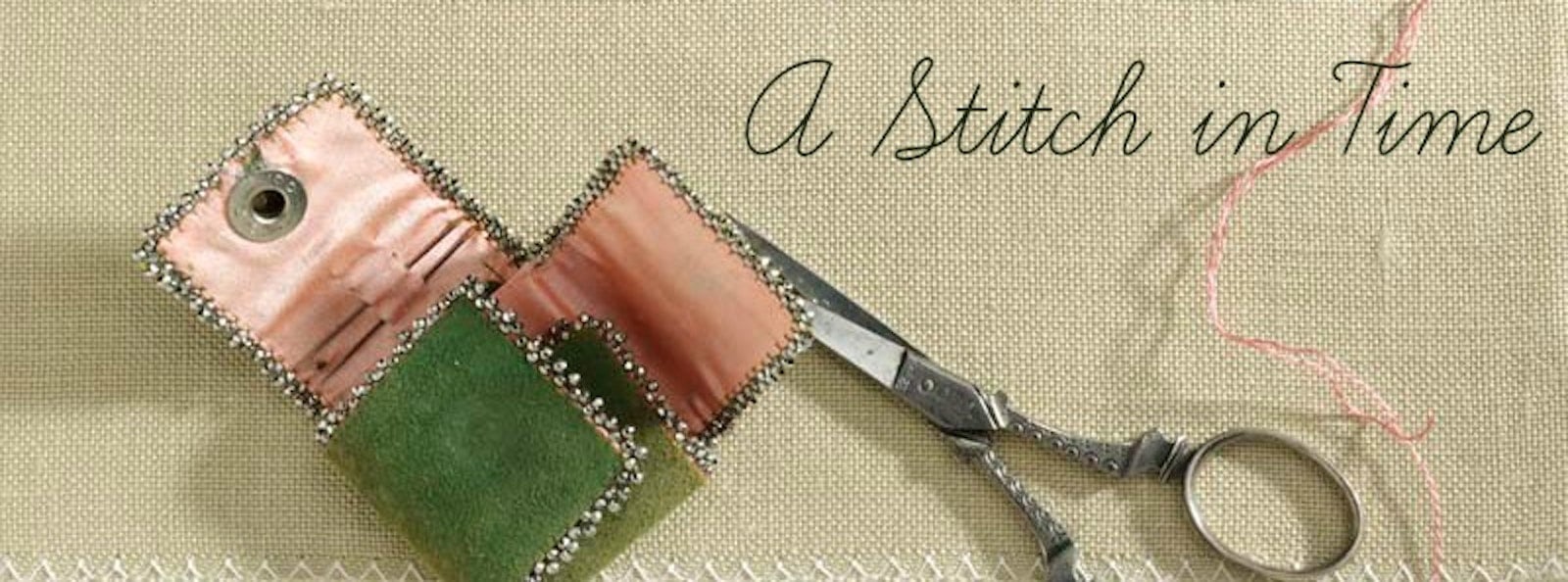Surprisingly, the upright cross-stitch, which resembles the common plus sign, has been either ignored or overlooked in many reference books on needlework stitches. Little information other than the traditional how-to-stitch diagrams is available. The stitch is also called the straight stitch and St. George’s cross-stitch (the banner of St. George is a red cross of four equal legs on a white background; for more on St. George, see “The Lord Grey Banners,” PieceWork, September/October 2002).
Each individual upright cross-stitch is composed of one vertical and one horizontal straight stitch of equal length with either of these stitches as the top stitch (Figures 1 and 2). A row of upright cross-stitches may be worked either from left to right or right to left (Figures 1 and 2). Within a single design or motif, the top stitch should be oriented in the same direction.
Left to Right: Figures 1, 2, and 3.
The upright cross-stitch is usually stitched over two or four threads (Figure 3) on evenweave linen fabric or needlepoint canvas or on nonevenweave fabrics such as muslin, linen twill, or douppioni silk. It may, however, be worked over any number of threads.
An area of upright cross-stitches may be worked by completing each stitch before proceeding to the next one or by using a two-journey method. Figures 4, 5, and 6 illustrate the former and Figure 7 illustrates the latter. Rows of upright cross-stitches usually are interlocked with one another (Figures 4, 5, 6, 7, 12), creating a closely worked, textured (bumpy), and small diamond pattern. They also may be stacked one upon another to create an entirely different overall appearance (Figure 8). Work upright cross-stitches with a normal stitch tension or pull each leg of the stitch tightly for a lacy version.
Top Left: Figure: 4. Lower Left: Figure 5. Right: Figure 6.
Unlike the standard upright cross-stitch, its variations may have legs of unequal lengths as in the long upright cross-stitch (Figure 9), the wide upright cross-stitch (Figure 10), and the diagonal upright cross-stitch (Figure 11). Each creates a distinctive effect.
Any type of thread—cotton or silk floss, matte cotton, flower thread, pearl cotton, Persian and tapestry yarn, metallic braids, or silk ribbon — may be used for upright cross-stitches as long as the thread is of appropriate weight and strength for the ground fabric or canvas. Stitching alternate rows of upright cross-stitches in two different colors creates an interesting dotted appearance (Figure 12).
Top: Figure: 7. Lower Left: Figure 8. Lower Right Figure 9.
Use the upright cross-stitch for bands, borders, backgrounds, and fillings (especially small areas because of its small stitch size). This stitch is also excellent for stitching such textured items as tree bark, stars, flower centers (especially the large sunflower), fur trim on clothing, four-petal flowers, and sheep fleece.
Top: Figure: 10. Lower Left: Figure 11. Lower Right Figure 12.
Some sampler experts have noted the use of this easy, textured stitch in some centuries-old samplers. The upright cross-stitch also is a hard-wearing stitch that is almost snag-proof and is therefore useful for footstool covers, chair seats, and other items that may be subject to wear.
Deanna
This sixth installment of Deanna’s stitch tutorials originally appeared in the November/December 2002 issue of PieceWork, along with instructions for cross-stitching a sweet perforated paper box and much more. Deanna is PieceWork’s needlework technical editor; she previously was the editor of The Needleworker magazine. Stay tuned for more stitch tutorials from Deanna in the weeks ahead! Read the entire "Stitch in Time" series!
Featured Image: Scissors and needle case courtesy of Loene McIntyre. Photo by Joe Coca.





